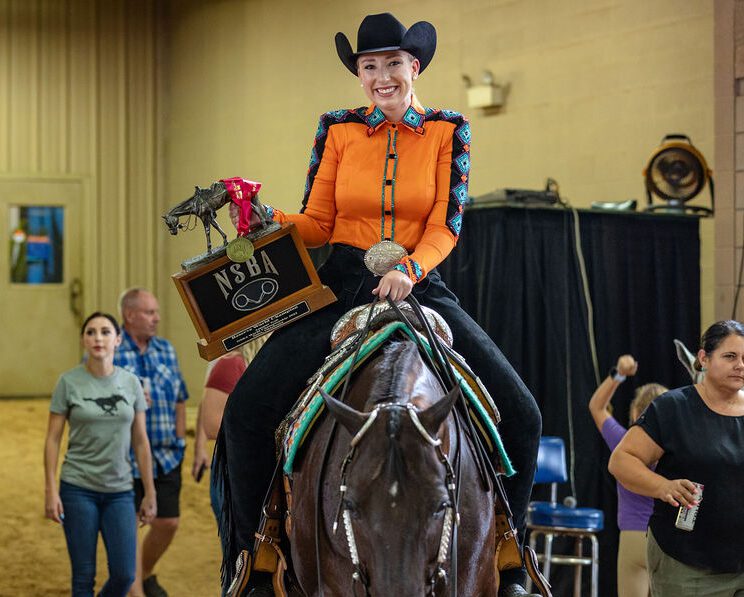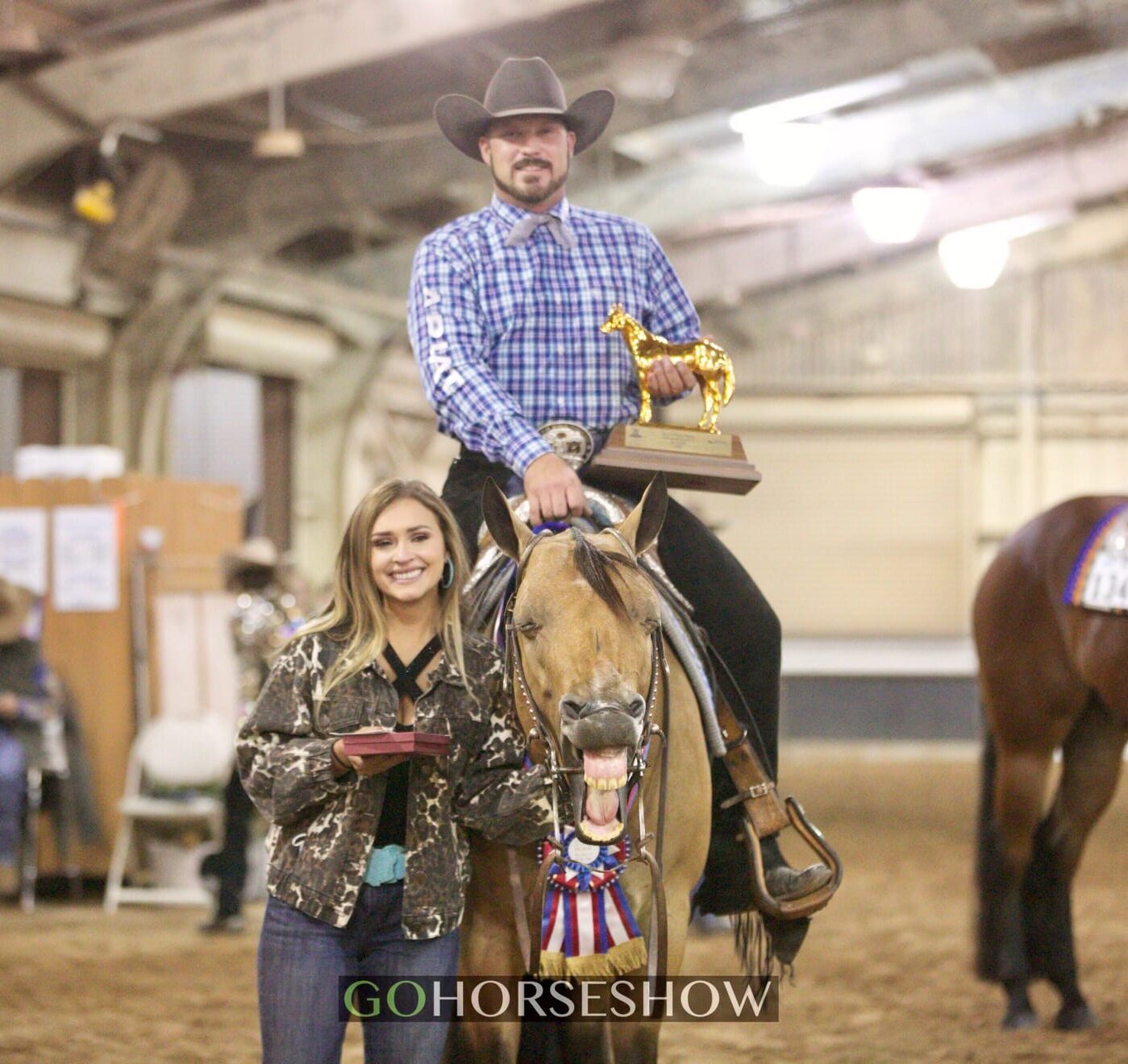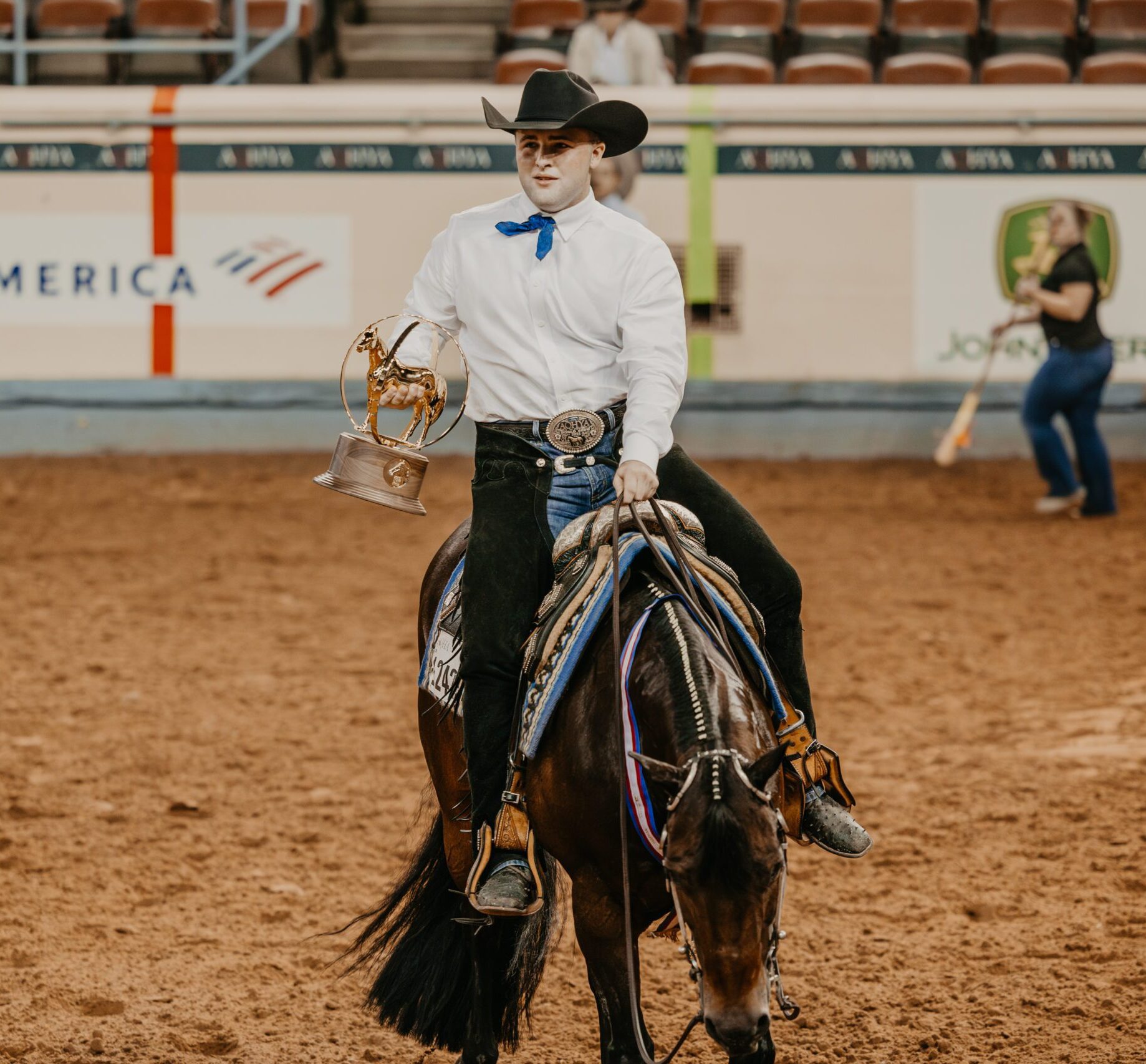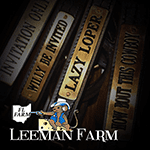In part 3 of our 4-part series – “Get the Insider’s Scoop on Learning a New Class,” we discuss the ever humbling trail class.
Trail has become one of the most popular and demanding classes to compete in at the horse shows. It can be especially intimidating to try this tough class for the first time. We asked some top competitors, judges, and trainers their advice for newcomers when competing in this class for the first time.
Be sure to check out part, 1 showmanship and part 2, horsemanship of this popular series, where our experts gave some great advice on trying new classes. And stay tuned for part 4 where we’ll tackle what’s thought to be one of the toughest classes at the horse show, western riding.
Walk the Course
Trainer and Judge Brent Maxwell, who recently relocated his training business to Kentucky says that his first recommendation is to walk the course.
“It doesn’t matter if it’s your first trail class or your 100th, make sure you walk the course,” Maxwell insists. “Walking the course lets you visualize where you need to put your horse to give him the best advantage to get over the poles. Use the space between obstacles wisely. Don’t hurry to get to the next obstacle. Think about where you need to make your transitions while walking the course as well. Take your time, look ahead, and have fun.”
Youth veteran Cheyenne Augsburger from Lake Butler, Florida agrees and adds, “I would go to shows and just sit in the stands and watch. You learn a lot from watching. Also, don’t be afraid to take help from people outside your circle. Any input helps for new people. And always walk your trail courses.”
Practice Tough Obstacles at Home
AQHA World & Congress Amateur Trail Champion Emma Brown says that learning a new class can be frustrating at times, but more than anything it’s exciting.
 “I think with trail, it is so important to trust your horse and your team. When I was first learning trail, and still to this day, I put so much trust into the advice that Jennifer and Judd Paul give me. We like to set up parts of patterns at home, specifically more difficult obstacles to help take some of that stress and create more confidence when I get to the shows. Most importantly, practice is always key, the more time you spend getting to know your horse the better.”
“I think with trail, it is so important to trust your horse and your team. When I was first learning trail, and still to this day, I put so much trust into the advice that Jennifer and Judd Paul give me. We like to set up parts of patterns at home, specifically more difficult obstacles to help take some of that stress and create more confidence when I get to the shows. Most importantly, practice is always key, the more time you spend getting to know your horse the better.”
Read the Rulebook
“Know your rules, no matter if it is the first time you are showing in trail or if you have been showing in it for years. However, as a first-timer, you really need to know what you are being judged on,” says Michigan Trainer Christa Baldwin.
The second thing they need to know is how you are being judged, learn the score sheet, and what a penalty is versus a maneuver score. This is very important, especially in a trail class where extra attention to details will set you apart from the rest.
“This can help you immensely if you know how to read the score sheet and why or how you got the score you received,” Baldwin adds. “I would tell them before they show to go watch, over and over. You can never watch too much. You will see how fast exhibitors are executing or how slow and careful, you will see the different cadence you may want to exhibit with your own horse. You will pick up different styles that you may want to incorporate into your own way of showing.”
Avoid Distractions
Oklahoma Trainer Leigh Berryhill says that when it comes to finally entering the arena after endless hours of practicing and preparing, remember, you have practiced for what you are about to do so, show like you have practiced.
“Do not concern yourself with any outside interests; ie, judges, spectators, friends and family. On that note, people new to the show environment so often get quite distracted when friends and family show up to watch, as it puts undo pressure on some to impress these folks, and it usually causes mess ups. It’s best to eliminate all outside distractions. It’s just you and your horse. Have fun!”
Be Open Minded
Trail specialist Martin Doustou of Ocala, Florida says that first and foremost is to be open minded about the new event.

“There are many intricate details for each of these events. For me personally, I’m very much a visual learner, which can be a blessing and a curse because many times, what we see going on to the naked eye looks very simple and straight forward, but what we don’t see are the hours that went into perfect that specific maneuver to get to that point.”
That being said, they also go hand-in-hand. “So, I think coming into a new event, it will help someone a lot by sitting and just watching. For instance the trail, sit and watch the warm up pen, then sit and watch the show pen to get an idea of how the patterns flow and how the maneuvers are executed from a visual standpoint. Then, don’t be afraid to ask the questions of how. How do you get to that point, what exercises are done to get to that point, what training techniques and tools can be used, etc.”
Never Stop Learning
“The greatest advice I was ever given – which applies to all disciplines – is to never stop learning,” Grant Mastin, a multiple World and Congress Champion in the trail states. “No matter where you are in the process, a beginner or well accomplished, there is always something to learn. You have to take the good and the bad in stride and continuously build and grow from those opportunities.”
 In an event like the trail that is full of ups and downs, where it can be anyone’s day, you have to take full advantage of any and every opportunity you are given.
In an event like the trail that is full of ups and downs, where it can be anyone’s day, you have to take full advantage of any and every opportunity you are given.
“Personally, what has helped me grow the most as an exhibitor primarily focused in the trail is asking, analyzing, and emulating successful exhibitors or trail ‘gurus’ who have been where I want to be. It is then important to take this information and sculpt it in a way that works for you and your horse to accomplish the goals you want to achieve. Ultimately, you can never become complacent and you must always be willing to learn.”
In case you missed the first two parts of our series, “Get the Insider’s Scoop on Learning a New Class,” read part 1, showmanship and part 2, horsemanship. And stay tuned for our fourth and final class, the ever-popular and challenging western riding.









